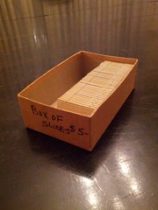From the sandbox site. It starts out strong, but…
> Write a rock song about classic computer collecting in the style of 1970s era Rush
A thousand years ago when computers were new
A vision of the future, so hard to conceive
A man of ambition set out on a quest
To collect classic tech, no matter the cost
From Altair to Tandy, Commodore to Apple
He sought out relics of yore, in every nook and cranny
From the first PCs to the Commodore 64
He strove to build a museum of technology
He found joy in the hunt, and treasured each part
He’d scour for days and never tire
Components, peripherals, and motherboards galore
He’d take each piece home and never ask for more
His collection grew and his passion ran deep
A history lesson from each motherboard he’d keep
He’d show off his findings and share with the world
The classic computers that had long been unfurled
He’d share his passion and knowledge with all
His enthusiasm couldn’t be contained
He’d tell stories of the past to one and all
And help to preserve classic tech’s name






